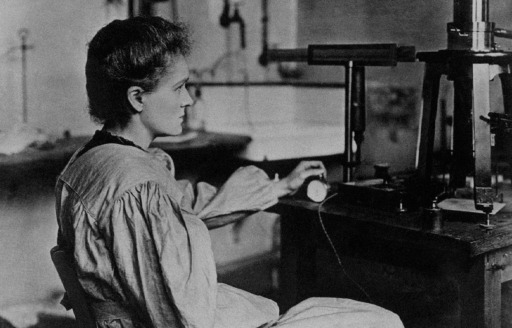The role of women in the periodic table. Counteracting the Matilda effect
In 2005, then-president of Harvard, Lawrence Summers, delivered a speech that caused a great stir among the scientific community: he claimed that gender inequality in science was not due to discrimination, but was the direct result of a genetic differentiation that made women less suitable for scientific research. Again, last October, CERN's Italian physicist Alessandro Strumia defended the inexistence of such discrimination during a conference on equal opportunities in science and went so far as to suggest that women sometimes receive preferential treatment as a result of gender policies. "Physics was invented and built by men, and is not accessed by invitation," Strumia added before identifying certain female scientific colleagues and asserting that they had achieved their position through politics rather than merit.
Exploring the role that women have played in the progress of science means acquiring a panoramic and much richer vision of all the aspects that come together in the pursuit of a discovery and of the people who take part in the process, those whose names are not usually stamped on any diploma: technicians, collaborators, assistants or students. Most of the pioneering women in chemistry always worked under male supervision, making it virtually impossible to reliably identify many of the contributions they made to the achievements in their laboratories.
For all this, the role of female scientists in the identification of the elements that form the periodic table as we know it today is difficult to unravel. There are officially four names that emerge from this search. Twice awarded with a Nobel Prize, Marie Curie stands out in the first place. Her research on radioactivity led the Curie couple to the discovery of radio and polonium in 1898. From the Curie Institute, Marie Curie also became a mentor to other renowned female scientists who would in turn carry out relevant discoveries in their fields of study.
In the case of the other two of the four female contributors to the periodic table, Lise Meitner and Ida Noddack, their work was always linked to that of a senior scientist. In 1907 Lise Meitner was admitted as an unpaid collaborator in the laboratory that scientist Otto Hahn had established in the department of Chemistry at the University of Berlin. There, she had to work hidden in the basement until the laboratory was transferred to the Kaiser-Wilhelm Institute for Chemistry in 1913. In 1917-18, they would jointly discover element 91 of the periodic table: the protactinium. In 1938, Meitner and Hahn also conducted the experiments that would lead to the discovery of nuclear fission, thanks in large part to the Meitner's calculations. However, as she fled to Sweden due to the outbreak of World War II, Otto Hahn published the results of their research without including the name of his collaborator. Neither did Otto Hahn recognize her contribution when he received the Nobel Prize in Chemistry in 1945.
It is now considered that the concept of nuclear fission was first suggested by Ida Noddack. This scientist worked as an unpaid researcher in her husband Walter Noddack's laboratory in Berlin, as the laws enacted for the improvement of the German economy after the crack of 1929 prevented married women from doing paid work. In 1932, she noted the possibility of the nucleus breaking into several large fragments, which would be isotopes of already known elements. While this idea was considered ludicrous by her peers at the time, her name would remain in history thanks to another discovery she made with her husband in 1925: the rhenium. They also conducted experiments that allowed them to identify element 43, which they called masurium. Emilio Segre and Carlo Perrier would eventually isolate this element in 1937, giving it the name technetium.
The only woman considered today as the exclusive discoverer of a chemical element, that is, without having her name associated with that of a chief male scientist or husband, is Marguerite Perey. The French physicist, a disciple of Marie Curie, managed to isolate the element 87, Francium. In 1939 she would become the first woman elected to the French Academy of Sciences.
The historical analysis of the role played by women scientists in the development of the periodic table is filled with footnotes and untimely claims. In an essay entitled "Women as Inventors," American suffragette Matilda Joslyn Gage first pointed to the social and historical phenomenon by which women scientists see their achievements attributed to male colleagues and superiors. What would be first coined by historian Margaret W. Rossiter as the Matilda effect in 1993 is still considered today as a fact in many textbooks, and is supported by numerous examples dating back to Trota de Salerno (12th century), whose medical treatises were attributed to various male authors upon her death. The vindication of the historical role played by women in science is also reflected today in initiatives such as Women In Red, a project that aims to publish a daily Wikipedia page about all those female researchers whose names are still displayed in red on the platform, meaning that there is no information about them. Initiatives such as the Women and Girls in Science Day must also ensure that names such as those of Berta Karlik, Harriet Brooks, Carmen Brugger Romaní or Trinidad Salinas Ferrer - and, above all, the important contributions they made to science - do not go unrecognised forever.
Find more information here: Celebrate the women behind the periodic table
By Nora Martín
